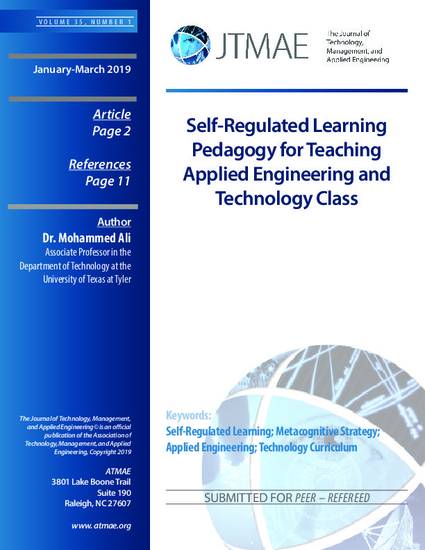
This paper reports on the implementation of self-regulated learning (SRL), a teaching innovation pedagogy where test subjects and embedded prompts were simulated the iterative cyclical progression of self-regulated learning processes. SRL skills can be developed with various tactics, including activities that provoke the self-assessment or reflection of learning. Prior studies reported that when an instructor supports students to construct their own SRL skills rather than predefined strategies, students gain better knowledge of course content. The four-phase SRL model has been implemented in computer aided drafting, a common course in applied engineering and technology curriculums. The four phases are as follows: planning and designing, identifying priorities and allocating resources, executing and self-monitoring, and evaluating and controlling. The four phases are intended to provide students with training and experience to efficiently practice and develop metacognitive strategies for a successful completion of the course content. For this study, students were informed in advance to prepare for a coming quiz on the content. They were asked to make self-efficacy assessment, measure confidence in correctly completing the quiz, plan for preparation for the quiz, and identify learning priorities and resources. After finishing the quiz, students were asked immediately to make self-evaluative judgment on correctly completing the quiz again. The instructor graded the quiz and hinted correct answers as feedback. Additionally, students were encouraged to think what strategy(s) worked well and to improve unsuccessful strategies. Students were informed of a second quiz, and instructed to apply successful strategies, prioritize and adopt learning resources. The instructor graded the second quiz, and returned it to students so they could reflect on their SRL skills. Results showed that the SRL doubled students' quiz scores. Overall, findings of this study demonstrated the innovative method's positive impact to student learning, which can be replicated in other applied engineering and technology courses.
Available at: http://works.bepress.com/mohammedali/4/
